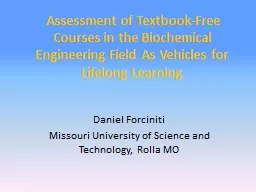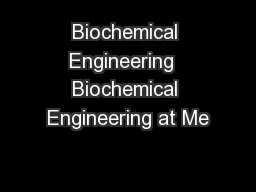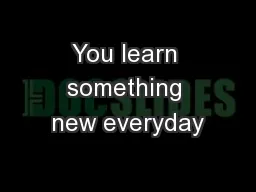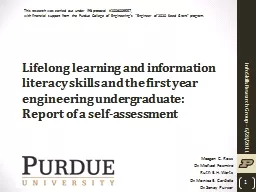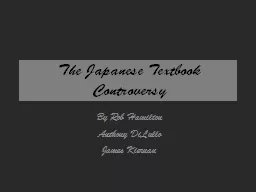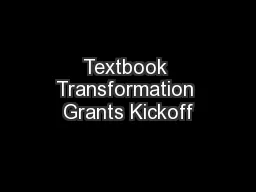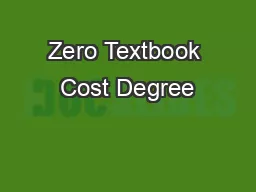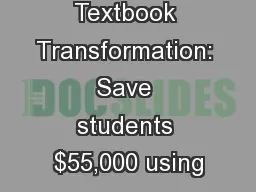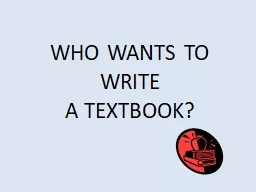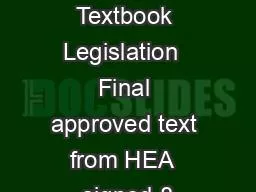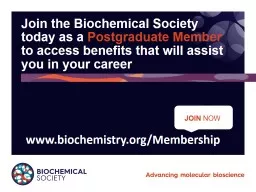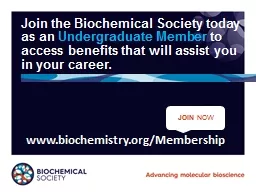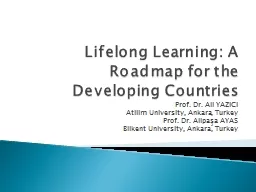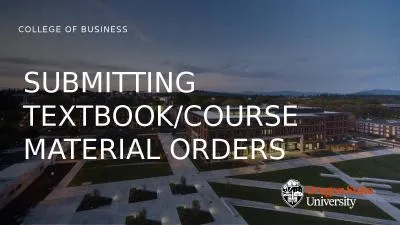PPT- Assessment of Textbook-Free Courses in the Biochemical Engineering Field As Vehicles
Author : articlesnote | Published Date : 2020-08-04
Daniel Forciniti Missouri University of Science and Technology Rolla MO Background I have been teaching a Bioseparations course without a textbook for 10 years
Presentation Embed Code
Download Presentation
Download Presentation The PPT/PDF document " Assessment of Textbook-Free Courses in..." is the property of its rightful owner. Permission is granted to download and print the materials on this website for personal, non-commercial use only, and to display it on your personal computer provided you do not modify the materials and that you retain all copyright notices contained in the materials. By downloading content from our website, you accept the terms of this agreement.
Assessment of Textbook-Free Courses in the Biochemical Engineering Field As Vehicles: Transcript
Download Rules Of Document
" Assessment of Textbook-Free Courses in the Biochemical Engineering Field As Vehicles"The content belongs to its owner. You may download and print it for personal use, without modification, and keep all copyright notices. By downloading, you agree to these terms.
Related Documents

